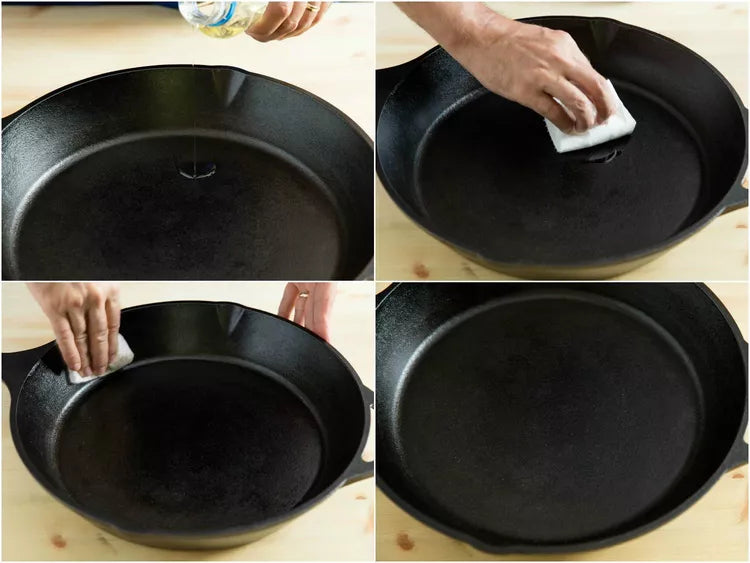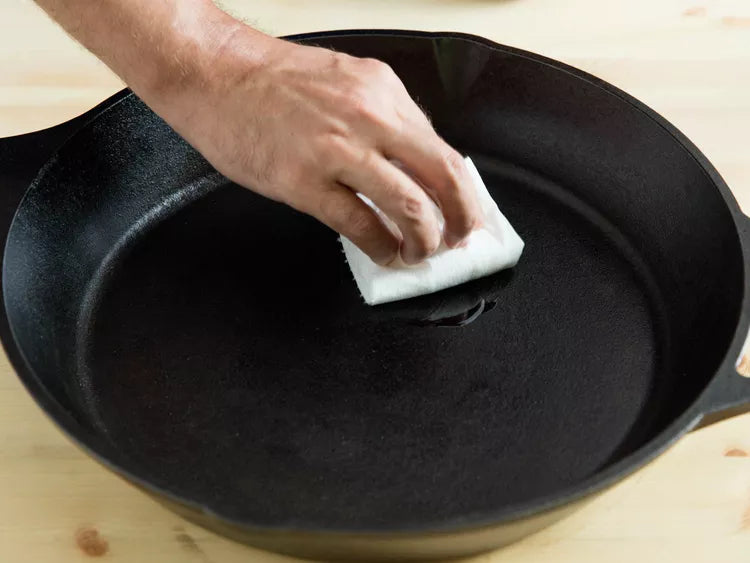Caring for your cast iron is an indispensable skill that every kitchen professional must master. Knowing when to reseason cast iron ensures your pans remain in excellent condition, aiding in superior cooking performance and long-lasting durability.
These remarkable pieces of cookware can last a lifetime, but they require attention to maintain that perfect, non-stick surface. This article will delve into the essential signs that indicate when it's time to reseason your cast iron, providing you with exclusive tips to keep your cookware in tip-top shape.
:max_bytes(150000):strip_icc():format(webp)/20160817-steak-choron-sauce-vicky-wasik-2-0edfa090a9954970bf19ca199e8b9997.jpg)
Understanding Cast Iron Seasoning
Before discussing when to reseason cast iron, its crucial to understand what seasoning means. When you season cast iron, you're applying a layer of oil that transforms into a hard, plastic-like coating through a process called polymerization. This process forms a protective barrier that helps prevent rust and enhances the non-stick properties of the iron.
The first seasoning happens during manufacturing, but continuous usage means that this protective layer can wear over time. Therefore, its critical to know the signs indicating that your cast iron needs reseasoning.
Signs You Need to Reseason Your Cast Iron
As a kitchen professional, you'll want to be vigilant about your cast iron cookware. Here are the unmistakable signs that it's time to reseason:
1. Food Sticks to the Surface
If you find that food is starting to stick to your cast iron, this is a clear signal that the seasoning layer has weakened. Keeping your pans non-stick is essential for both cooking convenience and flavor integrity. Reseason promptly if you're experiencing this issue.
2. Visible Rust Formation
Rust on your cast iron is a significant red flag. When moisture penetrates the seasoning layer, it can lead to rust formation. If you see any signs of rust, you'll need to reseason your pan to restore its protective coating.
3. Dull or Flaky Finish
A shiny non-stick surface is indicative of a well-seasoned cast iron. If your cookware appears dull, flaky, or uneven in texture, it's a sure sign that it needs a new layer of seasoning.
4. Unpleasant Metallic Taste or Smell
Sometimes, improper seasoning can lead to an off taste or smell lingering in your food. If you experience this, it's best to reseason your skillet to eliminate the chance of tainted flavors.
How to Reseason Your Cast Iron Cookware
Reseasoning your cast iron isn't as daunting as it seems. Heres a step-by-step guide to help you through the process:
Step 1: Clean Thoroughly
First, clean your cast iron thoroughly. Use warm water and a plastic scrubber to remove food particles or grease. Avoid soap as it can strip the seasoning. If your pan has rust, consider using a mixture of equal parts vinegar and water to scrub that away.
Step 2: Dry Completely
After washing, dry your cast iron immediately. Leaving it wet can promote rust. A warm oven or stovetop can help completely evaporate moisture.
Step 3: Apply Oil
Use a paper towel to apply a thin layer of oil to your pan's surface. Opt for oils with a high smoke point, such as grapeseed or flaxseed oil. Want to know more about the best oils for seasoning? Check out this article.
Step 4: Heat in the Oven
Preheat your oven to around 450F. Place your cast iron upside down on the middle rack. This prevents pooling of excess oil. Bake for about an hour, allowing the oil to polymerize effectively.
Step 5: Cool and Repeat
Once the hour is up, turn off the oven and allow the cookware to cool before removing it. You can repeat this process several times for a more robust non-stick surface.
Maintenance Tips for Your Cast Iron
After reseasoning, maintaining your cast iron is crucial. Here are a few terrific tips:
- Always dry your pan after cleaning.
- Use minimal soap and water, mainly for stubborn residue.
- Store it in a dry place to reduce moisture exposure.
- Consider applying a light layer of oil after each use.
When to Reseason Different Types of Cast Iron
Cast iron cookware comes in various forms, such as skillets, Dutch ovens, and griddles. Each may have slightly different reseasoning schedules based on usage:
Skillets
Used frequently for frying and sauting, skillets may require reseasoning more often, approximately every 6 months to a year.
Dutch Ovens
For Dutch ovens that see heavy usage, you might want to reseason them once a year. Make sure to check for any signs that necessitate immediate action.
Griddles
Your griddles can accumulate grease and food buildup quickly. Reseasoning them quarterly is often a sensible practice.
Frequently Asked Questions
1. How often should I reseason my cast iron cookware?
The frequency depends on usage, but generally, twice a year is a good rule of thumb. However, monitor for signs needing immediate action.
2. Can I use soap to clean my cast iron?
Soap can strip seasoning. It is best to use minimal or no soap when cleaning your cast iron. Warm water usually suffices.
3. What oil is best for seasoning cast iron?
Oils with high smoke points, like canola, grapeseed, or flaxseed oil, are recommended. Learn more about the best oils for seasoning here.
:max_bytes(150000):strip_icc():format(webp)/__opt__aboutcom__coeus__resources__content_migration__serious_eats__seriouseats.com__images__2016__09__20160817-cast-iron-pan-vicky-wasik-3-c56f176298784fef9e60f6cea198e0e4.jpg)
Conclusion
Keeping your cast iron in exceptional condition is fundamental to any kitchen professional's success. Knowing when to reseason cast iron and how to take the steps required can lead to tremendous improvements in your cooking experience. Invest the time in this crucial process, and your cast iron cookware will repay you with better flavor, ease of use, and longevity.
For additional tips on seasoning, consider reading this resource.
This article contains affiliate links. We may earn a commission at no extra cost to you.






Leave a comment
This site is protected by hCaptcha and the hCaptcha Privacy Policy and Terms of Service apply.